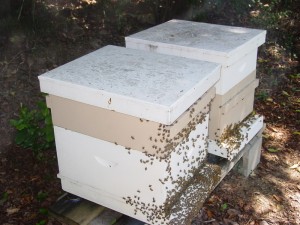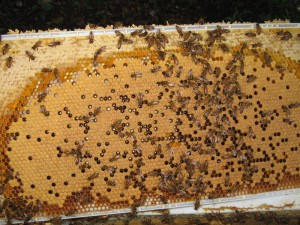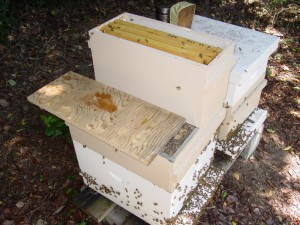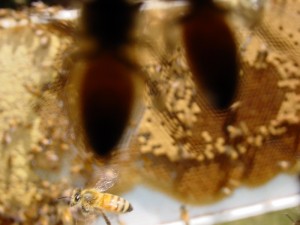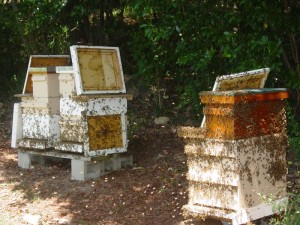After harvesting the honey, I returned to empty supers to the hives, placing them above the inner covers, to allow the bees to move any remaining honey back into their colonies. Two weeks later, I removed the now dry supers and stored them in the basement. I put some Para-Moth crystals on top of the stack of boxes to prevent infestation by wax moths. The boxes will remain there until Spring, when they will be aired out and returned to the hives to begin the honey collection process again.
August is the time to check for varroa mites, and September the time to consider feeding hives that don’t have enough honey to make it through the winter, but there isn’t much for beekeepers to do in late July after the supers have been stored. Since several of the hives have a lot of bees, I thought I might try splitting some of the colonies. This is more often done in spring, but it is reasonable to do it in summer after the honey is harvested. My mentor didn’t have much experience with this, so I was on my own.
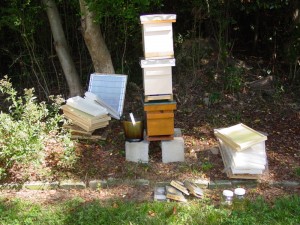
My equipment for this project – three small hive boxes (nucs), frames, feeders, and a Fry-Daddy containing used vegetable oil to pour in cans to keep the ants out.
From what I have read, making nucs is fairly straightforward. From an established hive, take two frames with larvae/capped brood (and the adherent bees) and one frame with honey/pollen. Put these along with two empty frames in a five-frame nuc. One can either wait for the bees to make a new queen (the so-called “walkaway nuc”), or install a new queen. Given that this is late in the season for making a new hive, I chose to order new queens for these hives.
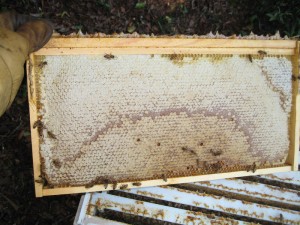
Capped honey. A frame with both honey and pollen might be a better choice, but there is still a fair amount of pollen available in the neighborhood in July.
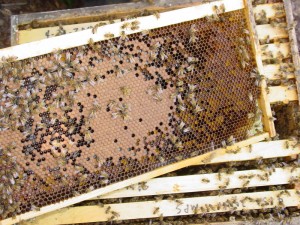
Although this frame doesn’t have as much brood as the one shown above, I used it anyway, since it has some pollen, too.
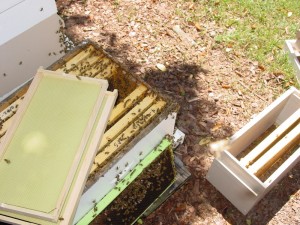
Installing the frames into the nuc. Empty frames went into the established hives to replace the frames removed.
The most straightforward way to make these nucs would be to simply install the frames with the adherent bees into the new hive boxes and close them up for a day to get them ready for a new queen. However, this approach requires finding the queens in the established hives to ensure that they are not transferred along with the frames, and this is too daunting of a task for me. I chose to shake off the adherent bees and install the nucs over queen excluders to allow the workers to repopulate the frames before removing the nucs.

